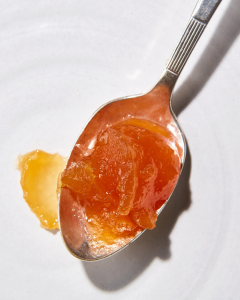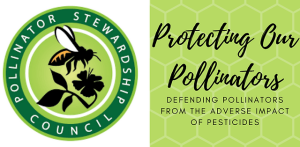Why Does Honey Crystallize? (And How Do You Bring It Back to Life If It Does?)

Don’t get rid of that last inch of solidified honey in the jar. Do this instead.
BY ANNA HEZEL
When archaeologists excavated King Tut’s tomb in 1922, they found (and allegedly tasted) a jar of honey that had survived the past several millennia intact. I think of this every time I come across a jar of honey in my kitchen that I helped harvest a full four years ago from bee hives my Brooklyn community garden keeps on the roof of my apartment building.
Although it’s a romantic idea to preserve the smells and tastes of Prospect Park’s flora from summer 2019 for posterity, I’m not keeping it around for sentimental reasons. I just can’t, for the life of me, get the jar open. And since this is the only container in my entire pantry without an expiration date printed on it, I’ve decided to procrastinate figuring it out…indefinitely.
While the King Tut story is oft-repeated to demonstrate that honey lasts forever, I’ve always wondered how this could be true when I’ve watched so many half-eaten jars over the years crystallize and solidify to a point of unusability. I reached out to Bruce Shriver, the beekeeper at Gowanus Apiary; Amy Newsome, a gardener, beekeeper, and author of Honey; and the folks behind Brooklyn-based Mike’s Hot Honey to get some practical advice on how to keep this natural sweetener at its free-flowing, floral best.
Does honey go bad?
At its core honey is essentially a very concentrated sugar solution, and because it has such a low water content (about 18%), it’s very resistant to fermentation or spoilage. It’s also full of organic acids from the nectar it’s made from, which give the honey an average pH of 3.4 to 6.1. This acidic quality makes it very difficult for microbes to survive in that jar or squeeze bottle.
“Honey lasts forever as long as it’s stored in an airtight container, such as a jar with a cap,” explains Shriver. The problems arise when the honey is exposed to air and humidity. “Honey will absorb moisture from the air if left open, which can cause it to ferment.”
When the moisture level changes, and the fermentation process begins, those sugars can be converted to alcohol. Mead is made by diluting honey with lots of water, and mixing it with yeast to kickstart that fermentation process. But if your jar is sealed and sheltered from extra humidity, it will last indefinitely. And, according to the USDA, even if you notice it getting cloudy or taking on a crystallized texture, the honey is still safe to eat.
Why does honey crystallize and turn solid sometimes?
“When bees make honey, they are creating a ‘supersaturated solution,’ which in this case means the natural sugars (mainly glucose and fructose—from the harvested flower nectar) are dissolved in a tiny amount of water, and the honey stays liquid but very temperamentally so,” explains Newsome. “The sugars start to crystallize over time.”
“All honey will crystallize over time,” agrees Shriver. “Commercially processed honey tends to crystalize more slowly than raw honey. That’s because all of the particles (mostly pollen grains) have been filtered under high pressure and heat. This process not only removes the pollen but also destroys many of the naturally occurring yeasts, enzymes, flavonoids, polyphenols and microbial compounds.”
The way honey solidifies is also partially decided by the bees themselves, when they choose which blossoms to land on.
“Each flower species has a different proportion of glucose to fructose in its nectar, and glucose crystallizes more readily than fructose,” Newsome explains. “This is why you can buy naturally runny honeys, like acacia, which has a higher fructose ratio.”
What can you do to prevent or fix it?
Newsome tells me that she saw an Instagram post recently that made her want to cry, suggesting that you can prevent crystals from forming by stirring some corn syrup into your honey. A section of her book, called “Crystallization is not the enemy,” suggests embracing the thicker, grainy texture and spreading it on crumpets or toast.
“I know it can be a pain,” she says, of the sweet but finicky syrup, “but really we should learn to love it and work with it, as a quirk of the natural world, and marvel that the bees have managed to make something so mercurial and delicious.”
When I reached out to the folks at Mike’s Hot Honey with a few questions on the subject, they sent me an informational pamphlet on the subject (presumably they get this question a lot). The pamphlet recommends keeping honey below 50° Fahrenheit for long-term storage, since this cooler temperature prevents crystallization. This will slow down how easily the honey flows, so they also recommend allowing it to warm back up to room temperature before using. If you’re using your honey frequently, they recommend keeping it between 70° and 80° Fahrenheit—a range that will delay crystallization.
But if you don’t have the luxury of tomb-like, cold storage conditions, you can always bring your solidified honey back to life with a little heat. Just set the jar or squeeze bottle in a bowl of warm water (but avoid water over 95° Fahrenheit, which can degrade some of the flavonoids, according to Shriver) until it starts flowing again.
We are here to share current happenings in the bee industry. Bee Culture gathers and shares articles published by outside sources. For more information about this specific article, please visit the original publish source: Why Does Honey Crystallize? (And How to Decrystallize It Naturally) | Epicurious








